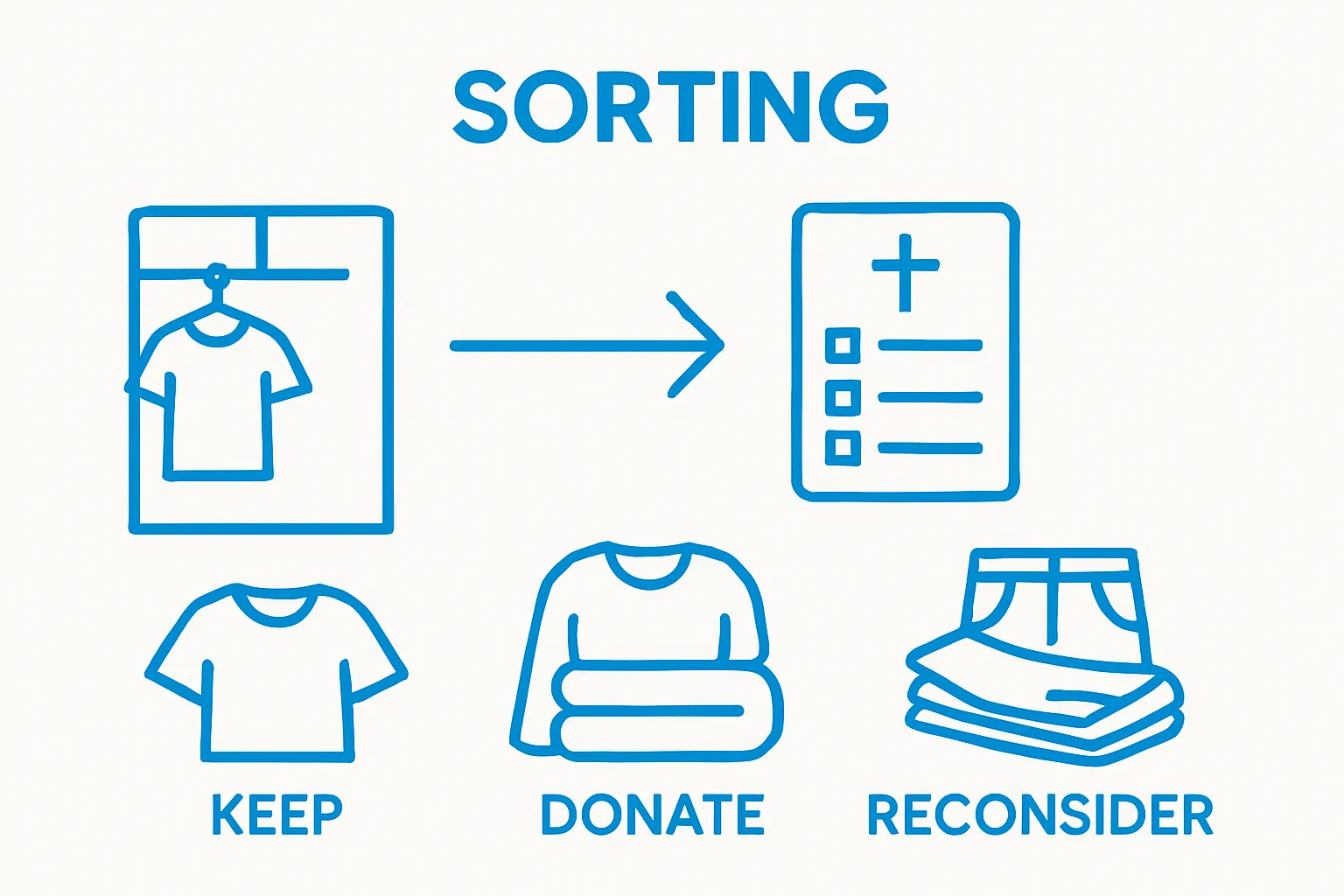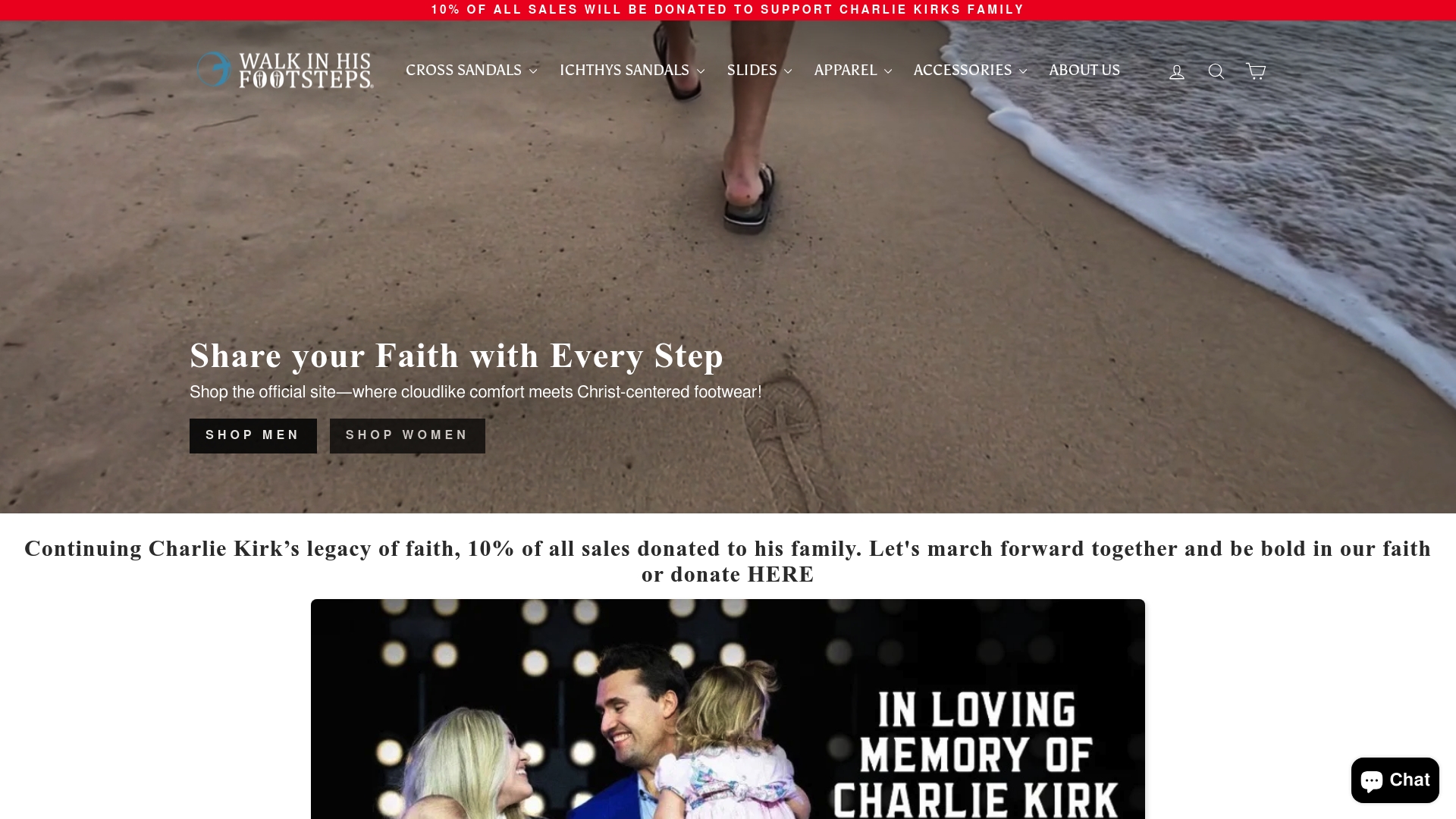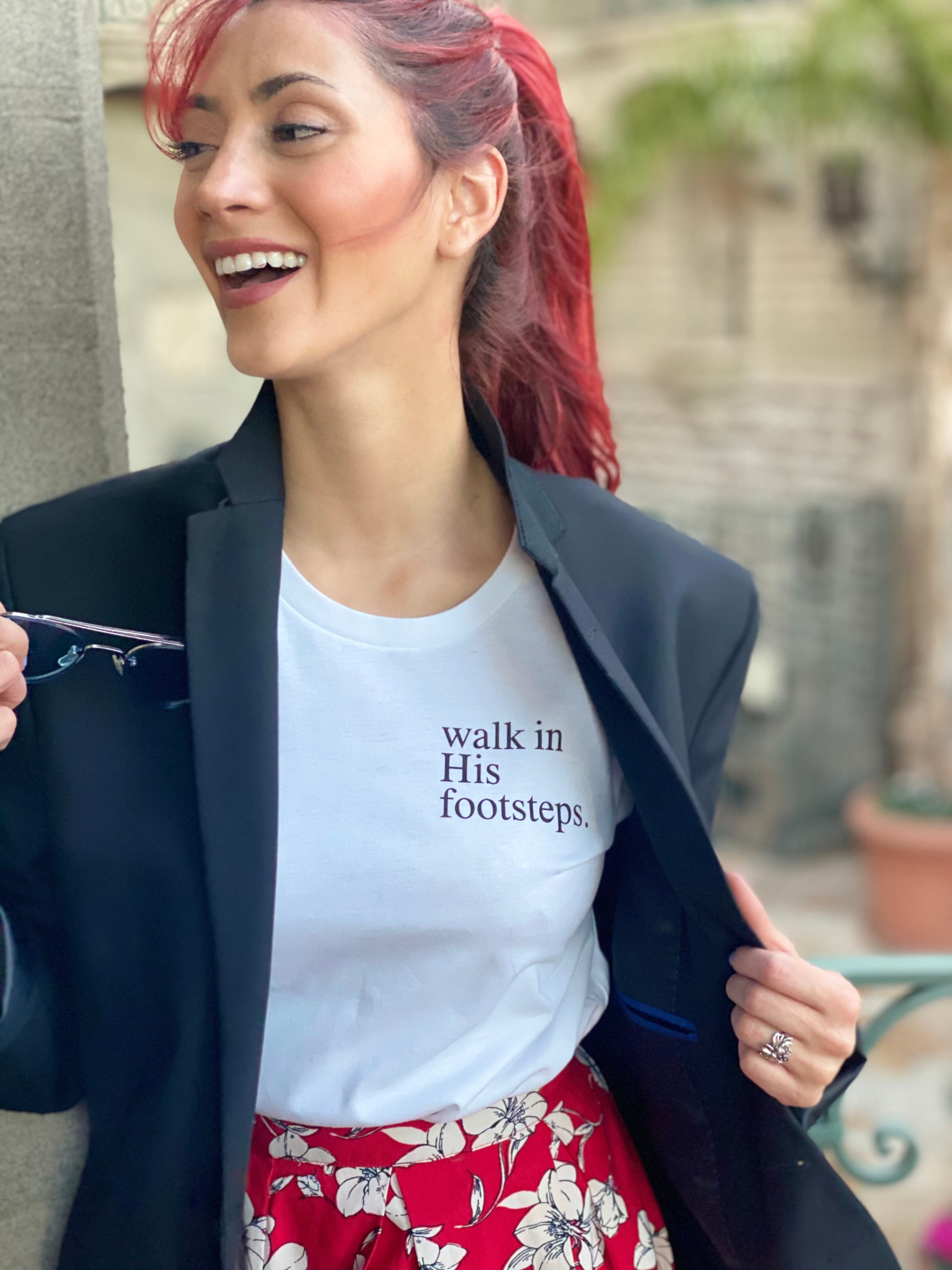Dressing with faith might sound like it is just about picking modest outfits for church. Yet personal faith sharply influences daily choices, including what you wear, according to Baylor University research. The most surprising part is this reflection goes way beyond what is in your closet it is about using your wardrobe as an authentic voice for your spiritual journey.
Table of Contents
- Step 1: Reflect On Your Faith And Identity
- Step 2: Assess Your Wardrobe Essentials
- Step 3: Choose Outfits That Align With Your Beliefs
- Step 4: Accessorize To Enhance Your Message
- Step 5: Test Your Outfits For Comfort And Impact
- Step 6: Share Your Style Journey With Others
Quick Summary
| Key Point | Explanation |
|---|---|
| 1. Reflect on your faith and identity | Understand how your clothing choices connect to your spiritual beliefs and express your relationship with God. |
| 2. Assess your wardrobe essentials | Evaluate your clothing collection to determine which items align with your Christian values and which do not. |
| 3. Choose outfits that reflect your beliefs | Select clothing that conveys respect for yourself and others, emphasizing modesty and personal style. |
| 4. Accessorize to enhance your message | Use accessories as subtle expressions of your faith, choosing meaningful and tasteful pieces. |
| 5. Share your style journey with others | Open up conversations about your clothing choices and inspire others through discussions about your faith. |
Step 1: Reflect on Your Faith and Identity
Dressing with faith begins with a profound internal journey of understanding your spiritual identity and how it connects to your external presentation. This initial step is about aligning your clothing choices with your core Christian beliefs, transforming what might seem like a simple wardrobe decision into a meaningful expression of your relationship with God.
Understanding Your Spiritual Wardrobe
Reflection starts by examining the deeper meaning behind your clothing. Your attire is more than fabric and design it is a canvas that communicates your values, respect, and devotion. According to Baylor University research, personal faith significantly influences how individuals make daily choices, including how they dress.
Consider asking yourself powerful introspective questions: What does modesty mean to me as a Christian? How can my clothing reflect respect for myself and others? How do I want my outfit to represent my spiritual journey? These questions move beyond superficial fashion trends and connect your wardrobe to your spiritual walk.
Your clothing becomes a form of worship when it reflects reverence, humility, and intentionality. This doesn’t mean wearing exclusively somber or outdated clothing, but rather selecting pieces that demonstrate dignity and self-respect. Think about biblical principles of presentation: clothed in righteousness, adorned with inner beauty, reflecting God’s love through your appearance.
Practical Spiritual Reflection Exercises
To truly embrace dressing with faith, engage in deliberate reflection practices. Spend quiet time in prayer, asking for guidance about your clothing choices. Journal about your current wardrobe and how it aligns with your spiritual values. Review your existing clothes through a lens of intentionality.
Look for clothing that makes you feel confident, comfortable, and aligned with your Christian identity. Your goal is not perfection, but genuine expression of faith through thoughtful, respectful clothing choices that honor both your body and your spiritual commitment. Remember, this is a personal journey of growth and self-understanding, unique to your individual relationship with God.
Step 2: Assess Your Wardrobe Essentials
After reflecting on your faith and identity, the next critical step in dressing with faith involves carefully evaluating your current wardrobe through a spiritual lens. This assessment goes beyond simple fashion inventory it is about understanding how your existing clothing aligns with your Christian values and personal spiritual journey.
Evaluating Your Current Clothing Collection
Begin by creating a comprehensive inventory of your clothing. Remove everything from your closet and lay out each item, examining them individually. Ask yourself meaningful questions: Does this piece reflect my faith? Does it promote modesty and respect? Would I feel comfortable wearing this in a church setting or around my spiritual community?
According to Pew Research Center’s studies on personal values, personal faith significantly influences lifestyle choices, including clothing selection. Your wardrobe should be an authentic representation of your inner spiritual landscape.
Sort your clothing into three primary categories: Keep, Donate, and Reconsider.
 Pieces that make you feel confident, comfortable, and aligned with Christian principles belong in the “Keep” category. Items that feel inappropriate, overly revealing, or inconsistent with your spiritual values should move to the “Donate” or “Reconsider” sections.
Pieces that make you feel confident, comfortable, and aligned with Christian principles belong in the “Keep” category. Items that feel inappropriate, overly revealing, or inconsistent with your spiritual values should move to the “Donate” or “Reconsider” sections.
Here is a checklist table to help you systematically assess your current wardrobe and make intentional decisions during your faith-based clothing evaluation process.
| Clothing Assessment Step | Questions to Ask | Action to Take |
|---|---|---|
| Take Inventory | Does this item reflect my faith values? | Set aside for review |
| Evaluate for Modesty & Respect | Does it promote modesty and respect? | Assign to category |
| Church/Community Suitability | Would I feel comfortable wearing this at church or with spiritual groups? | Consider for keeping |
| Confidence & Comfort Check | Does this piece make me feel confident and aligned with Christian principles? | Keep or Reconsider |
| Inappropriate/Unaligned Items | Does it feel overly revealing or inconsistent with my values? | Donate or Reconsider |
| Potential for Adjustment | Can I layer or modify this item to be faith-appropriate? | Decide on modifications |
| Final Category Assignment | Does this fit better in Keep, Donate, or Reconsider? | Organize accordingly |
Creating a Faith-Aligned Wardrobe Strategy
Transforming your wardrobe is not about discarding everything but about making intentional, mindful choices. Consider the versatility and appropriateness of each piece. Aim for clothing that allows you to feel comfortable, confident, and true to your spiritual identity.
For pieces in the “Reconsider” category, explore creative solutions. Can certain items be layered or modified to align more closely with your faith? A slightly revealing top might become modest with a complementary cardigan or undershirt. The goal is not strict restriction but thoughtful, purposeful styling that honors your body and beliefs.
Remember that building a faith-aligned wardrobe is a journey, not an overnight transformation. Be patient with yourself, celebrate small changes, and view this process as an opportunity for personal growth and spiritual expression.
 Your clothing can be a powerful testament to your faith, reflecting inner beauty, respect, and devotion.
Your clothing can be a powerful testament to your faith, reflecting inner beauty, respect, and devotion.
Step 3: Choose Outfits that Align with Your Beliefs
With your wardrobe assessment complete, the next pivotal step is intentionally selecting clothing that truly reflects your Christian values and personal spiritual journey. This process transforms fashion from a mere aesthetic choice into a meaningful expression of faith.
Understanding Modest and Respectful Clothing Principles
Choosing faith-aligned outfits requires understanding that modesty is not about restrictive or outdated clothing, but about honoring your body as a temple. Your clothing should communicate respect for yourself and others, highlighting inner beauty over external appearance. Learn more about creative ways to express faith through clothing and discover nuanced approaches to spiritual dressing.
Consider clothing that provides appropriate coverage without sacrificing personal style. Look for pieces that are comfortable, well-fitted, and allow you to move freely while maintaining dignity. Layering becomes your strategic ally in creating modest outfits that are both contemporary and respectful. A sleeveless dress paired with a lightweight cardigan, or high-neck tops underneath lower-cut garments, can transform potentially inappropriate pieces into spiritually considerate ensembles.
Practical Outfit Selection Strategies
Develop a personal checklist for outfit selection. Does this clothing make me feel confident and authentic? Would I be comfortable wearing this in various Christian community settings church, Bible study, or fellowship events? Prioritize versatility and pieces that can be mixed and matched to create multiple modest looks.
The following table summarizes practical outfit selection strategies to help you choose clothing that matches your beliefs and fits a variety of settings.
| Strategy | Key Question to Ask | Practical Example |
|---|---|---|
| Confidence & Authenticity | Does this make me feel authentic and confident? | Pick clothing you feel at ease in |
| Versatility Across Settings | Would I be comfortable at church and Bible study? | Wear an outfit suitable for both places |
| Modesty & Coverage | Does this provide appropriate coverage and dignity? | Layer a cardigan over a sleeveless top |
| Mixing & Matching | Can this be easily paired to create new modest looks? | Combine skirts with various tops |
| Faithful Intention, not Perfection | Am I being intentional, even if not perfect every day? | Progress toward spiritual wardrobe goals |
Remember that dressing with faith is not about perfection but intention. Some days you might feel more aligned with your spiritual wardrobe than others, and that is completely acceptable. The goal is continuous, thoughtful progress in how you present yourself to the world.
Your clothing choices become a silent testimony reflecting your inner spiritual landscape. By selecting outfits that honor your beliefs, you communicate volumes about your character, respect, and commitment to living a life guided by Christian principles.
Step 4: Accessorize to Enhance Your Message
Accessories are powerful tools for expressing your faith, transforming simple outfits into meaningful statements of spiritual identity. This step goes beyond mere decoration, focusing on intentional choices that communicate your Christian values and personal beliefs.
Selecting Meaningful Spiritual Accessories
Consider accessories as conversation starters and silent witnesses to your faith. Symbolic jewelry, such as cross pendants, fish symbols, or scripture-inspired pieces, can spark meaningful dialogues about your spiritual journey. Explore our guide to must-have Christian accessories to discover inspiring options that align with your beliefs.
When selecting accessories, prioritize pieces that are both tasteful and meaningful. A delicate cross necklace or a bracelet with an inspiring biblical verse can serve as gentle reminders of your spiritual commitment. Avoid overly flashy or aggressive designs that might come across as performative rather than genuine.
Practical Accessorizing with Purpose
Think holistically about how your accessories complement your overall outfit and spiritual message. Scarves with subtle biblical patterns, watches with meaningful engravings, or even shoes that reflect your faith can become powerful expressions of your Christian identity. The key is subtlety and authenticity.
Consider the settings where you will be wearing these accessories. A professional environment might call for more understated pieces, while church gatherings or faith-based events might welcome more explicit spiritual symbols. Your accessories should feel like a natural extension of your personal style and spiritual journey.
Remember that the most powerful accessory is your genuine spirit of love, kindness, and compassion. While physical accessories can be meaningful, they are ultimately secondary to the true expression of your faith through actions and character. Choose pieces that make you feel confident, comfortable, and connected to your spiritual path, allowing your inner light to shine through more brightly than any external adornment.
Step 5: Test Your Outfits for Comfort and Impact
The final crucial step in dressing with faith involves thoroughly testing your carefully curated outfits to ensure they not only look good but also feel authentic, comfortable, and genuinely representative of your spiritual journey. This step transforms theoretical clothing choices into lived spiritual expression.
Physical and Spiritual Comfort Assessment
Begin by physically wearing each outfit in various settings to evaluate true comfort and functionality. Move, sit, stand, and engage in daily activities to understand how the clothing feels against your skin and supports your movements. An outfit that requires constant adjustment or makes you feel self-conscious will ultimately detract from your spiritual confidence.
Consider how each outfit makes you feel internally. Do these clothes allow you to move through the world with dignity, grace, and self-assurance? Your clothing should be a source of empowerment, not restriction. Pay attention to how different pieces make you feel emotionally and spiritually, not just physically.
Spiritual Impact and Perception Evaluation
Evaluate your outfits from multiple perspectives. Ask trusted friends in your church community for honest feedback about how your clothing choices communicate your faith. Seek perspectives that go beyond aesthetic judgments and focus on the spiritual message your attire conveys.
Reflect on potential scenarios where your outfit might be perceived differently. A church service requires different considerations compared to a casual community gathering or professional workplace. Versatility becomes key in creating a wardrobe that speaks to your faith across various contexts.
Ultimately, dressing with faith is a deeply personal journey of self-expression and spiritual alignment. Your clothing should feel like a natural extension of your inner beliefs, allowing your authentic self to shine through. Be patient with yourself, embrace continuous learning, and remember that true style emerges from confidence, compassion, and a genuine connection to your spiritual path.
Step 6: Share Your Style Journey with Others
The final step in dressing with faith transforms your personal journey into a powerful opportunity for community connection and spiritual inspiration. Sharing your style evolution is not about seeking validation, but about creating meaningful dialogues and potentially inspiring others in their own faith-based fashion exploration.
Creating Authentic Conversations
Begin by recognizing that your clothing choices can serve as a gentle, non-confrontational method of sharing your faith. Conversations about style can naturally lead to deeper spiritual discussions, allowing you to share the intentionality behind your wardrobe decisions. When someone compliments an accessory or asks about a particular outfit choice, view it as an invitation to discuss your spiritual journey.
Consider creating a personal narrative around your clothing transformation. How has your approach to dressing changed as your faith has deepened? What lessons have you learned about expressing your beliefs through personal style? Explore our guide on understanding why Christian clothing matters to gain additional insights into communicating your faith through fashion.
Sharing Your Journey Responsibly
Approach sharing your style journey with humility and grace. The goal is not to judge or lecture, but to provide gentle inspiration. Your clothing can be a testament to your faith, demonstrating that modest, intentional fashion can be both contemporary and spiritually meaningful. Engage in conversations that invite curiosity rather than defensiveness.
Consider practical ways to share your journey: mentoring younger members of your church community, hosting a modest fashion workshop, or simply being a living example of how clothing can reflect inner spiritual values. Your authenticity will speak louder than any prescribed rules or judgmental statements.
Remember that your ultimate message is not about the clothes themselves, but about the heart behind them. Your style journey is a personal reflection of your relationship with God, and sharing it becomes an act of vulnerability, connection, and quiet testimony.
Take the Next Step on Your Faith-Aligned Style Journey
After exploring how to align your wardrobe with your spiritual identity, you may still struggle to find clothing and accessories that reflect your Christian values in daily life. Creating a truly faith-filled outfit is about more than just modesty or comfort. You want every detail—right down to your footwear—to serve as a visible reminder of your faith and personal devotion. It can be difficult to discover meaningful options that match both your beliefs and your style, especially when your current wardrobe does not fully represent your spiritual journey.

Why not make your next wardrobe step intentional and faith-driven? At Walk In His Footsteps, you will find patented slip-on footwear featuring unique cross bottoms and Jesus fish bottoms. These are more than just comfortable shoes. They turn every step you take into a powerful testimony of your Christian commitment. Ready to express your faith with confidence from the ground up? See our collection and choose a piece that effortlessly connects your inner belief with your outward style. Start walking with purpose today—your story can inspire others on their own journey.
Frequently Asked Questions
What does it mean to dress with faith?
Dressing with faith involves aligning your clothing choices with your core Christian beliefs, transforming your wardrobe into a meaningful expression of your relationship with God.
How can I assess if my clothing aligns with my Christian values?
Evaluate your attire by asking yourself if each piece reflects modesty, respect, and if you feel comfortable wearing it in spiritual settings. Sort your clothes into categories: Keep, Donate, and Reconsider based on these criteria.
What types of clothing should I consider for modesty?
Look for pieces that provide adequate coverage while allowing you to express your personal style. Layering items, such as cardigans over sleeveless dresses, can help make outfits more modest and respectful.
How can accessories enhance my Christian message through fashion?
Select meaningful accessories that serve as conversation starters or reminders of your faith, like symbolic jewelry. Choose accessories that are tasteful and complement your overall outfit, enhancing the spiritual message you wish to convey.
Recommended
- Understanding the Guide to Faith-Based Clothing – Walk In His Footsteps
- Understanding Why Christian Clothing Matters for Believers – Walk In His Footsteps
- Understanding Christian Clothing Stores: Faith and Fashion – Walk In His Footsteps
- 7 Creative Ways to Express Faith Through Clothing – Walk In His Footsteps




